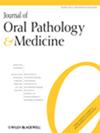Prognostic significance of cyclin D1 expression pattern in HPV-negative oral and oropharyngeal carcinoma: A deep-learning approach
Abstract
Background
We aimed to establish image recognition and survival prediction models using a novel scoring system of cyclin D1 expression pattern in patients with human papillomavirus-negative oral or oropharyngeal squamous cell carcinoma.
Methods
The clinicopathological data of 610 patients with human papillomavirus-negative oral/oropharyngeal squamous cell carcinoma were analyzed retrospectively. Cox univariate and multivariate risk regression analyses were performed to compare cyclin D1 expression pattern scoring with the traditional scoring method—cyclin D1 expression level scoring—in relation to patients' overall and progression-free survival. An image recognition model employing the cyclin D1 expression pattern scoring system was established by YOLOv5 algorithms. From this model, two independent survival prediction models were established using the DeepHit and DeepSurv algorithms.
Results
Cyclin D1 had three expression patterns in oral and oropharyngeal squamous cell carcinoma cancer nests. Superior to cyclin D1 expression level scoring, cyclin D1 expression pattern scoring was significantly correlated with the prognosis of patients with oral squamous cell carcinoma (p < 0.0001) and oropharyngeal squamous cell carcinoma (p < 0.05). Moreover, it was an independent prognostic risk factor in both oral squamous cell carcinoma (p < 0.0001) and oropharyngeal squamous cell carcinoma (p < 0.05). The cyclin D1 expression pattern-derived image recognition model showed an average test set accuracy of 78.48% ± 4.31%. In the overall survival prediction models, the average concordance indices of the test sets established by DeepSurv and DeepHit were 0.71 ± 0.02 and 0.70 ± 0.01, respectively.
Conclusion
Combined with the image recognition model of the cyclin D1 expression pattern, the survival prediction model had a relatively good prediction effect on the overall survival prognosis of patients with human papillomavirus-negative oral or oropharyngeal squamous cell carcinoma.

 求助内容:
求助内容: 应助结果提醒方式:
应助结果提醒方式:


